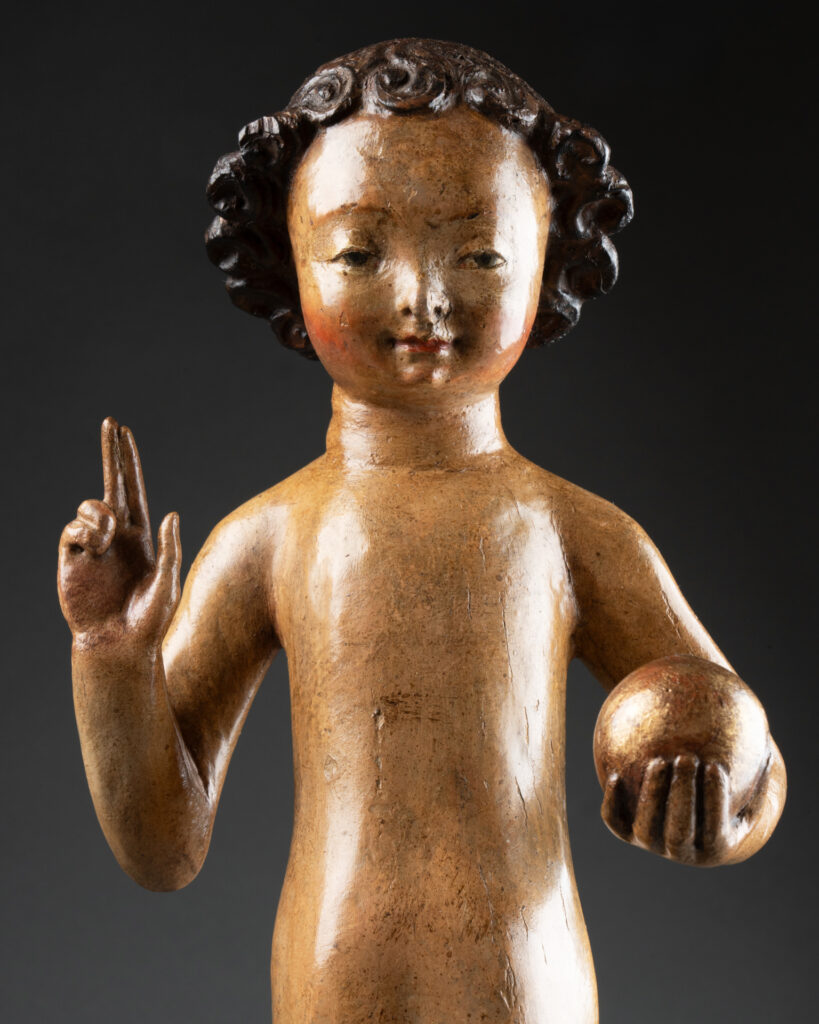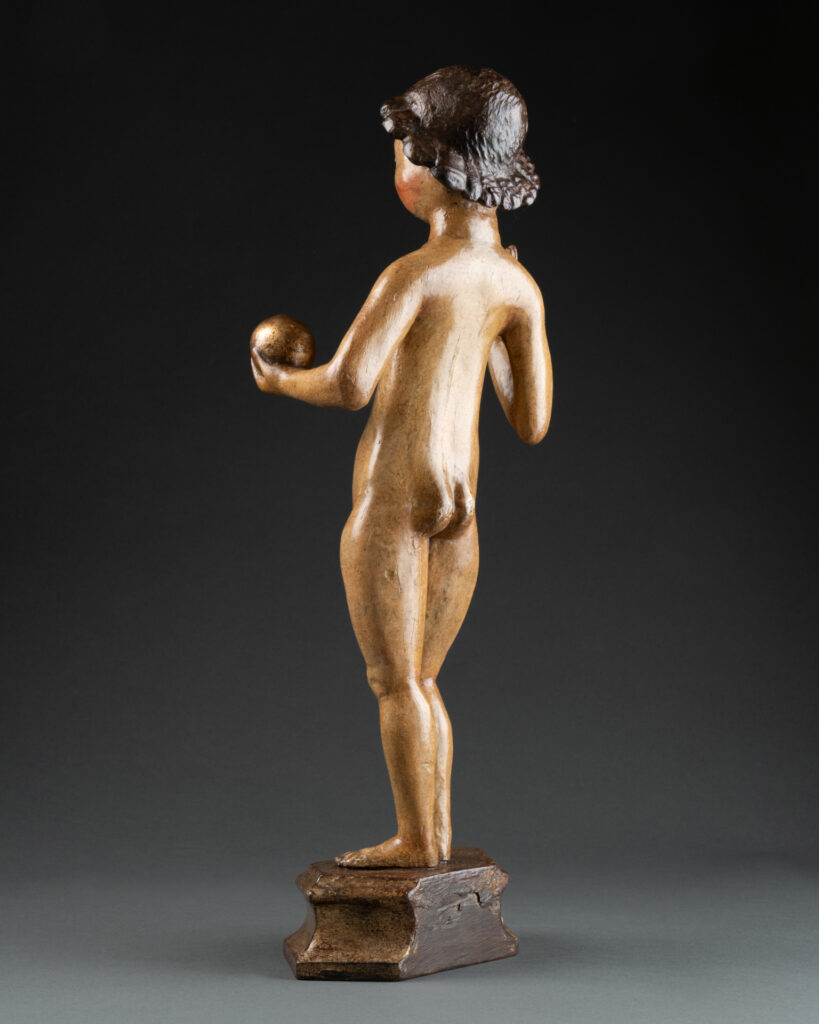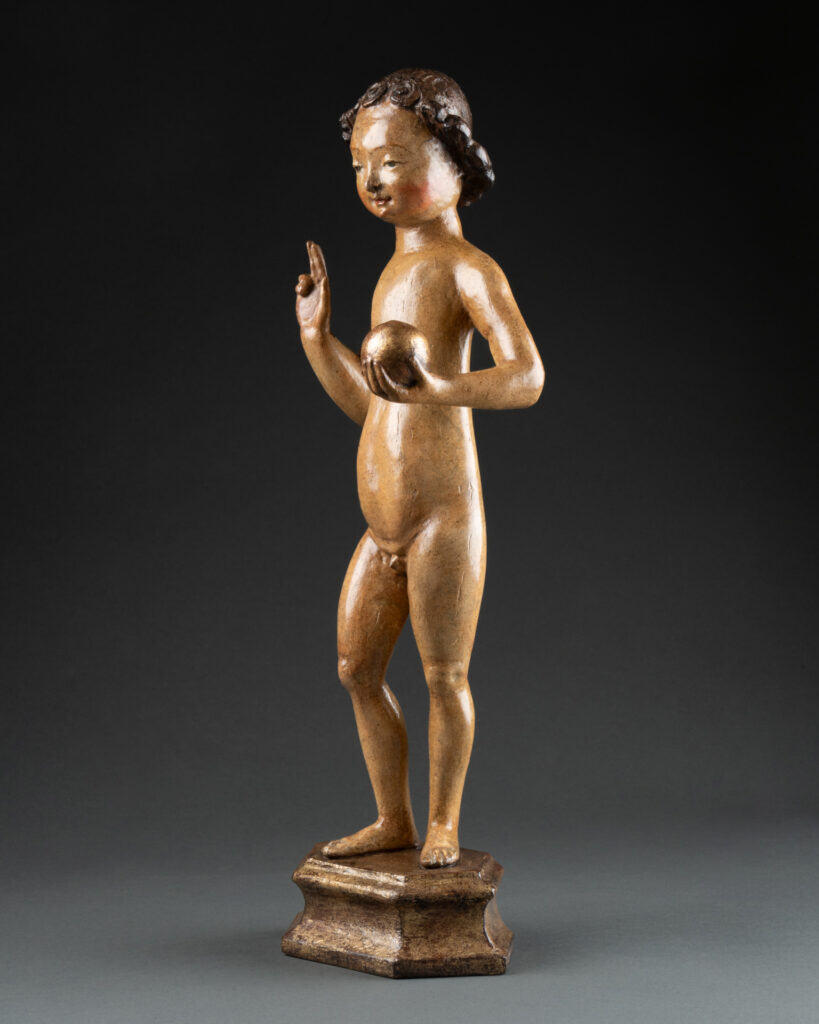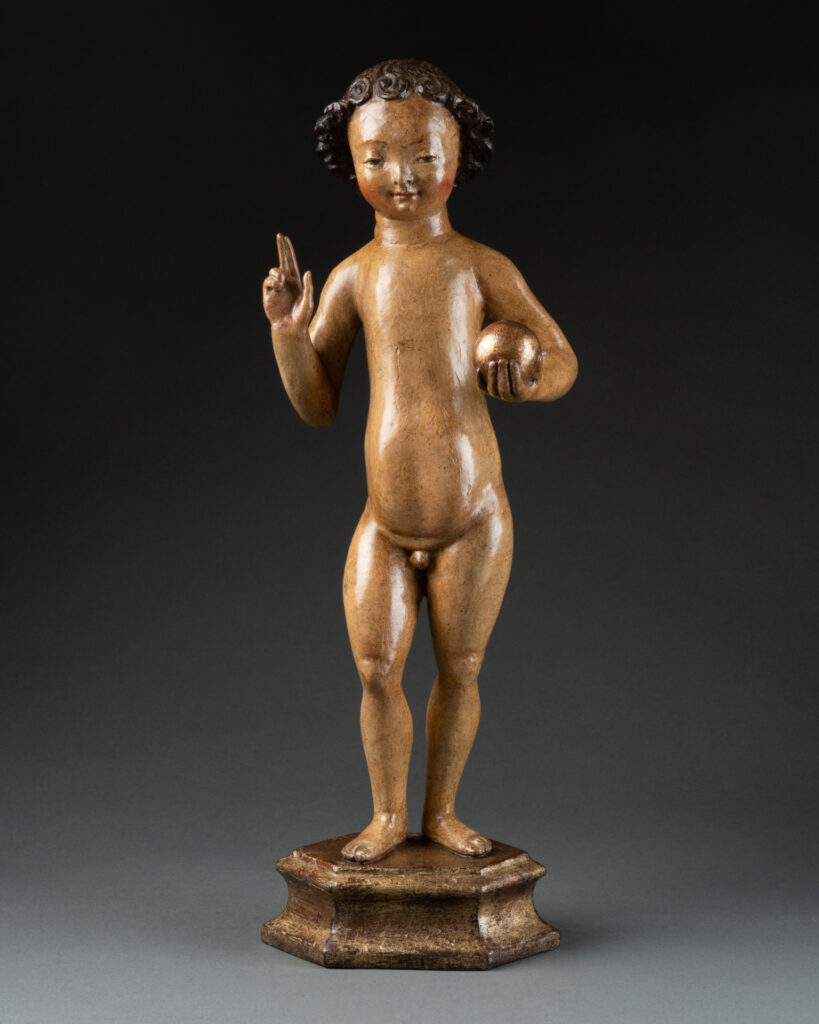This magnificent 16th-century polychrome wooden figure, produced in Mechelen, Belgium, depicts Christ the Child blessing.
Presented as the Salvator Mundi, or “Savior of the World”, the statue emphasizes Christ’s dual nature – divine and human – through two aspects: his nudity and the globe associated with the gesture of blessing.
Here, the divine Child is shown naked, full-figured, with an elongated torso and heavy, rounded thighs. He stands on a hexagonal base.
Her straight neck supports her small head. Strands of hair fall lightly in curls over her broad forehead. His face is delicately painted: his eyebrows are rendered in fine lines, his almond-shaped eyes are small, his sculpted nose is carefully turned up, his cheeks are rosy and his thin mouth is smiling. All these features contribute to Christ’s serene, soothing appearance.
With his right hand, the Child raises his thumb, forefinger and middle finger to bless the viewer. He also holds a golden globe in his left hand.
Statuettes depicting the Infant Jesus as Salvator Mundi were common around 1500. Linked to new, more private, more embodied forms of devotion, these statuettes were the object of special manipulations during prayers.
For example, nuns could dress these Christ-like statuettes, lay them down, talk to them, etc.
Thus, in 1344, a letter from the Dominican nun Margaretha Ebner describes this type of practice: “The little Jesus cries and prevents her from sleeping, demanding that she take him against her in bed. She agrees, but asks for a kiss to make up for her whim, and he complies, taking her in his arms. Another time, the Child demands to be breastfed. She holds him close and feels the sensation of human contact on her bare breast.
The wooden statuettes produced in 15th-century Mali are part of these new religious practices, reserved for the private sphere. This type of production is characterized above all by the lacquered polychromy of the figurines.
Copies of wooden statuettes of Christ blessing remain precious, since they represent only 10% of Malinese production in the 16th century..
Two examples can be found in French museum collections, one in the Musée de Cluny and the other in the Musée du Louvre. These two Salvator Mundi bear many similarities to our statuette: the headdress, the lacquered polychromy, the gesture of blessing and the golden globe, the plump body and elongated torso, the nudity of the Child, etc… We note only that the copy in the Musée de Cluny has no base, and that the one in the Louvre differs from our work.
Finally, this Christ Child measures 39cm, corresponding to the height expected for this type of production, as indicated by the book Made in Malines: “the height of 35 to 37 cm is dominant until the middle of the production”.




